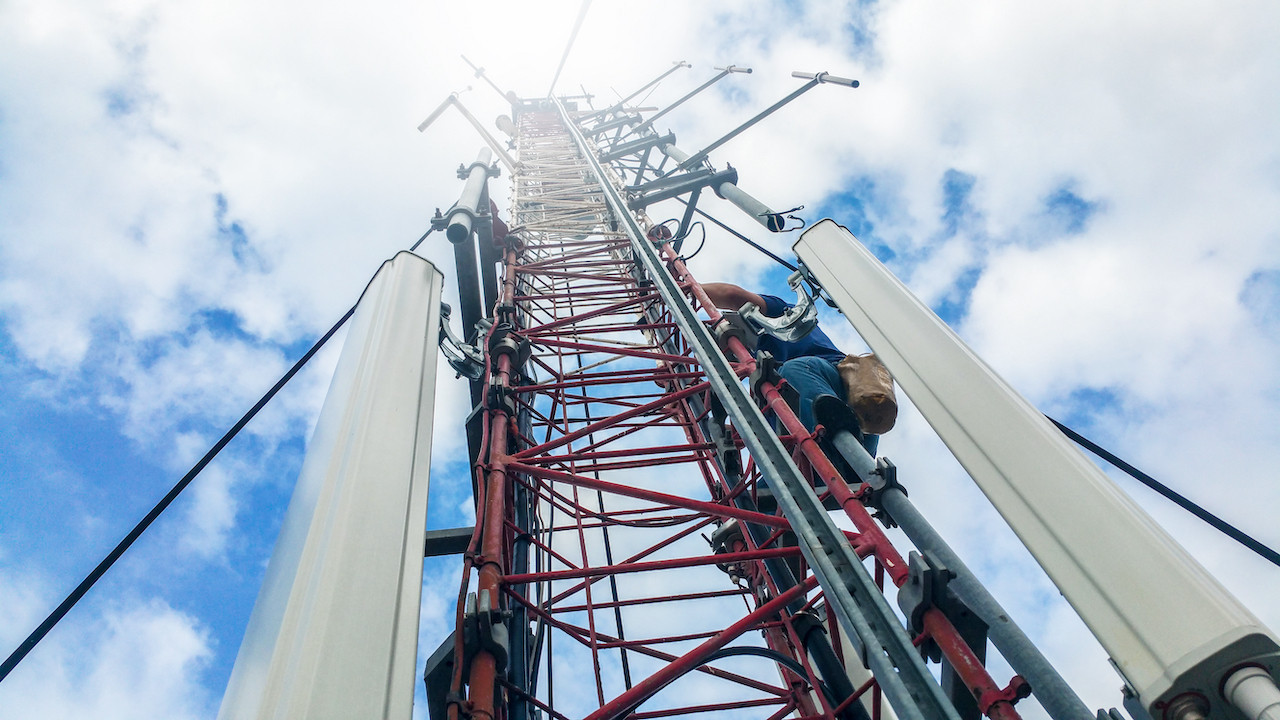At Schroders, Ben Forster, manager of the Global Real Asset Securities fund, highlights five underlying trends that are driving the potential of digital infrastructure. First, the need for infrastructure to support new forms of communication. "Forced teleworking is driving companies towards digitisation, cloud computing and video conferencing", with the result that the industry giants--Amazon, Google, Microsoft, IBM and Oracle--are investing $50bn in the cloud to meet demand.
Secondly, the development of cloud outsourcing, which is "still in its infancy". By 2025, the switch by companies to outsource all or part of their cloud infrastructures will require $1.3trn of investment.
Need for denser network coverage
The development of 5G, driven by the "exponential" explosion of mobile data traffic, requires much denser network coverage. "Mobile network operators are now racing to lease more base stations, fibre optic cables and small antennas to provide this denser coverage. We anticipate mobile capital expenditure of $1.1trn over the period 2020-2025."
Digital infrastructure is immune to economic volatility.
For investors, the first benefit is that "digital infrastructure is immune to economic volatility." Firstly because of massive public investment and also because "digital infrastructure owners structure their leases to protect themselves from external shocks such as inflation and currency devaluation". Stability and predictability become invaluable in today's volatile world.
In terms of returns, Forster favours emerging markets--"that's where the fastest growth will come from”--and the sub-sectors of data centres, data relay antennas and fibre optic cables.
A sector that is extremely sensitive to technological change.
For Marc Ebert and David Giboudeau, managers of the Quaero Infrastructure Securities Fund, communications infrastructure "is by far the fastest growing sector in the infrastructure universe, thanks in particular to public investment".
This theme provides both diversification and performance in portfolios, they said. Provided you are selective. “The difficulty for investors is that this is a sector that is extremely sensitive to technological change.” It is also a sector where "growth does not necessarily rhyme with profitability".
Favouring the relay antenna sector
Their favourite sub-sector, the one that combines efficiency and stability, is relay antennas. These antennas are either owned by telecom operators or by companies specialising in masts. “The business model is simple, profitable and predictable.”
The tower companies build them and lease them to one or more telecom operators per tower. The more tenants there are, the greater the return on investment. These leases are long term--10 to 20 years--easily renewable and rates change over time. In the US, the average increase per year is 3%. In Europe, the increase is usually indexed to inflation. The other major difference between the two markets is the percentage of these antennas owned directly by external operators: one-third in Europe and two-thirds in the US.
Ebert and Giboudeau are more reserved about investments in telecom operators “which are not very profitable and not very predictable. There is very little differentiation in their offerings and they have to make massive investments, particularly in fibre, to remain competitive, while their margins are falling.”
Caution in data centre sector
The data centre sector should also be approached cautiously, as it is considered "more risky than in recent years". While the growth of the activity is indisputable, the two fund managers point out the barriers to entry that weigh on competitiveness. And the energy costs which are difficult to pass on in their entirety to customers. So be careful.
The reservations are even greater for satellite operators. "A very small industry: there are less than five companies listed on the stock exchange”, and whose revenues are based on military contracts ("short-term contracts") and satellite television ("a declining business"). "At the moment, we don't think this is a good investment opportunity."
Finally, in the cable sector, in addition to a "very limited" investment universe, Ebert and Giboudeau noted a decline in the growth of cable operators which they believe is structural.
This article was published for the Paperjam+Delano Finance newsletter, the weekly source for financial news in Luxembourg. . Read the original French version of this article on the site.


